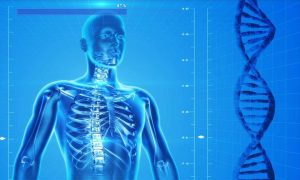New research from Massachusetts General Hospital and Brigham and Women's Hospital presented at the annual meeting of the Radiological Society of North America (RSNA), which took place this year from November 27 to December 1, details the development of a deep-learning (DL) model that can leverage the information from a lone chest X-ray to produce a decade-spanning risk assessment for death from heart attack or stroke stemming from atherosclerotic cardiovascular disease. This falls in line with current guidelines on cardiovascular disease prevention, which recommend a 10-year risk assessment to determine which patients should be prescribed a statin for primary prevention.
The typical method of weighing an individual’s specific risk level entails using the atherosclerotic cardiovascular disease (ASCVD) risk score, a statistic model that considers age, race, sex, systolic blood pressure, blood test readings, and much more. Patients that hit a 7.5% risk or higher for the 10-year markers received a statin medication recommendation. The inherent challenges of estimating risk with this methodology, however, is what inspired researchers to create a new, streamlined means of risk assessment.
"The variables necessary to calculate ASCVD risk are often not available, which makes approaches for population-based screening desirable," said Dr. Jakob Weiss, the study’s lead author and a radiologist affiliated with the Cardiovascular Imaging Research Center at Massachusetts General Hospital and the AI in Medicine program at Brigham and Women's Hospital in Boston. "As chest X-rays are commonly available, our approach may help identify individuals at high risk."
Rapid advancement in AI has enabled what researchers consider to be a revolutionary step forward in this diagnostic area. In this instance, the research team trained a DL model called CXR-CVD risk to pour over solitary chest X-ray inputs to assess risk of death stemming from cardiovascular disease. Roughly 148,000 X-rays from more than 40,000 participants in the National Cancer Institute’s Prostate, Lung, Colorectal, and Ovarian Cancer Screening Trial, which was a multi-center, randomized controlled trial, were used to train and test the model.























